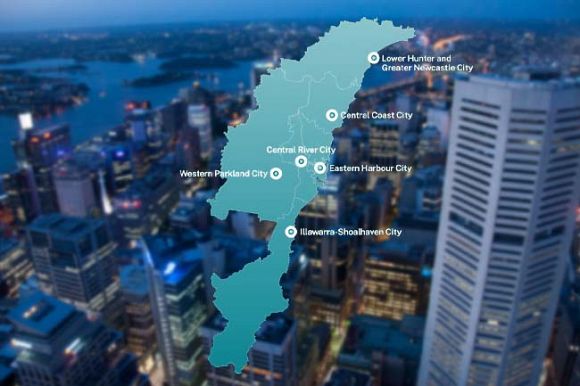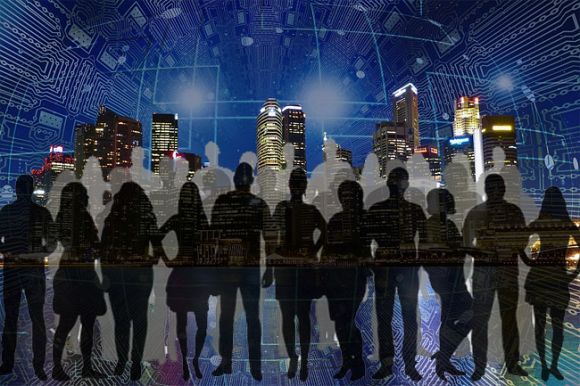While smart cities are providing technological innovations for both people and the environment, some residents are being left in the dark, writes Cate Altamura.
NOT EVERYONE has heard the buzzword “smart city”, however, the term has been gaining momentum. Some may see it as a Utopian way to live whereas others may see it as Big Brother.
Smart cities gained prominence in Australia in the early 2010s and as of 2020, each state has several smart city initiatives.
A smart city is a municipality that uses innovative technology and data analytics to improve the quality of life of its residents, enhance sustainability and streamline urban services.
Although there are positives, the scheme has several downsides. As smart cities rely heavily on technology, they are susceptible to cyberattacks which can impact public safety and private data.
Loss of jobs due to reliance on technology is also a threat. The automation of systems may lead to the displacement of jobs in certain sectors.
Smart cities use digital technologies such as the internet of things (IoT), sensors, cameras, data analytics and artificial intelligence (AI) to connect and manage their physical assets and infrastructure, including transportation systems, waste management, energy grids, buildings and public spaces.
At the core of it, a smart city endeavours to improve the quality of life of its citizens by better catering to their needs, by using time-sensitive information on the ground.
However, the cost to run these programs must be factored into the overall benefits.
A digital divide may also impact the community as not all will have access due to digital literacy or access to technology.
A study conducted by the University of South Australia (UniSA) published in the journal, Sustainable Cities and Society, found the South Australian Government had failed to explain the value of a smart city to its residents.
The study that was spread across citizens in South Australia uncovered that:
‘More than 45% have “never heard” of the term “smart city” and 54% do not understand the concept...’
In the early 2010s, Australia, along with various countries around the globe, was developing smart city initiatives. Several countries known for leading the charge include Singapore, South Korea, China, the United States of America, Japan, the United Arab Emirates and Denmark.
Singapore, which is considered a world-leading smart city, has a range of connected cameras and sensors that help to manage traffic and waste management and positively impact climate change.
The leading nation endeavours to reduce greenhouse gas emissions by 36% in 2030 compared to emissions recorded in 2005.
Japan, known for technology innovation, is currently using smart city solutions in Tokyo to help reduce carbon emissions. It is managing this by effectively improving efficiency and relying on the use of smart grids.
Smart cities have gained support from various business sectors in the community as well as the Australian Government. The Federal Government has been implementing the idea through its Smart Cities Plan, which aims to enhance the liveability of its citizens as well as productivity and sustainability.
At a state and territory level, the Queensland Government has established a Smart State Strategy, which endeavours to improve government services and encourage digital infrastructure.
The New South Wales Government has also created a Smart Places Strategy, which uses technology to assist with designing and managing public spaces.
In Victoria, the City of Melbourne has initiated a Smart City Office to establish and implement new projects focusing on being a smart city.
According to the City of Melbourne’s website:
Our vision for Melbourne as a smart city is simple: to enhance the aspects of our city that make us uniquely Melbourne and intelligently prepare for the changing needs of the community, the environment and the economy.
As a smart city, we’re already off and running. We’re prototyping tailor-made initiatives such as our work with people who are blind, deaf or deaf–blind to better understand how they navigate through the city.
As a result of this research, we’ve partnered with Vision Australia to trial beacon technology in Campbell Arcade, which transmits location-specific information to phones. And our Open Data platform has almost 100 unique data sets that are available for anyone to access and use, such as our 24-hour pedestrian counting system, which helps us understand pedestrian activity in our busiest locations so we can better plan for population growth in the future.
Geelong has also implemented a smart lighting system, using LED lights and sensors that adjust to lighting levels and traffic conditions.
When smart cities adopt and implement new technologies, they can help improve the lives of their residents and help streamline services.
The question is — is the public aware of this? The study by UniSA gave the smart city campaign a “D” for failing to engage with its residents.
According to the 2020 Smart City Index, which was published by IMD, Melbourne was ranked as the 12th smartest city globally, beating both Sydney and Brisbane. The areas the index focused on were the quality of life of its citizens, innovation and sustainability.
Private sectors have also had their sights set on smart city technologies, and Telstra, Optus, Siemens, Cisco and IBM are all on board.
Siemens, a global tech company, has worked with several cities, including Sydney.
During the Sydney Mardi Gras, software company Dynamic Crowd Measurement was able to measure the average mood of the crowd by detecting whether they were happy, neutral, sad or angry.
The software also detected the density of the crowd but coupled with the “mood” reader they could identify the intensity of the crowd and call for backup if required or redirect groups if certain areas were too dense.
With any new large-scale developments such as smart cities, there is a huge paradigm shift and this has to be mitigated. Some may see the change as a take-over and others may be left out. Others will revel in the efficiency and automation it offers.
Lead researcher in the UniSa study, Shadi Shayan, highlights the risks and benefits of smart cities:
Improving people’s quality of life is the ultimate goal of a smart city but it is also disruptive and challenging and if not properly executed can threaten a society.
The social risks of a smart city include creating a digital divide, disempowering and excluding people, and discriminating against people who are not across fast-changing technology.
It affects people in highly personal ways, depending on their age, education, gender and income level.
Cate Altamura is a freelance journalist and has worked in Uganda as a broadcast reporter.
Related Articles
- Smart cities vulnerable to cyberattacks
- Digital boost for South East Queensland a good start
- Using smart cities to protect democracy
- How Australia can learn from Scandinavian countries
- Telcos are key to smart city success
 This work is licensed under a Creative Commons Attribution-NonCommercial-NoDerivs 3.0 Australia License
This work is licensed under a Creative Commons Attribution-NonCommercial-NoDerivs 3.0 Australia License
Support independent journalism Subscribe to IA.















